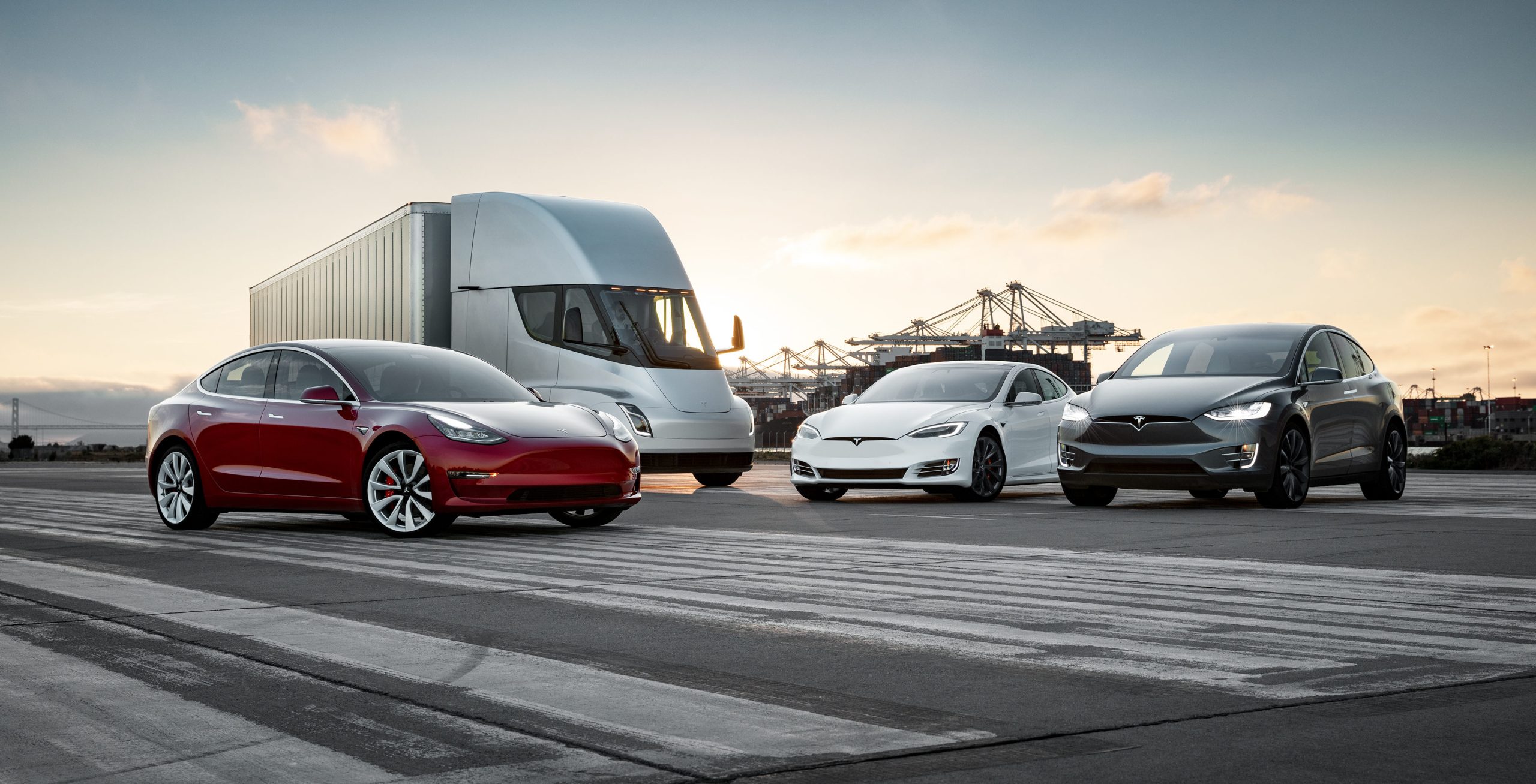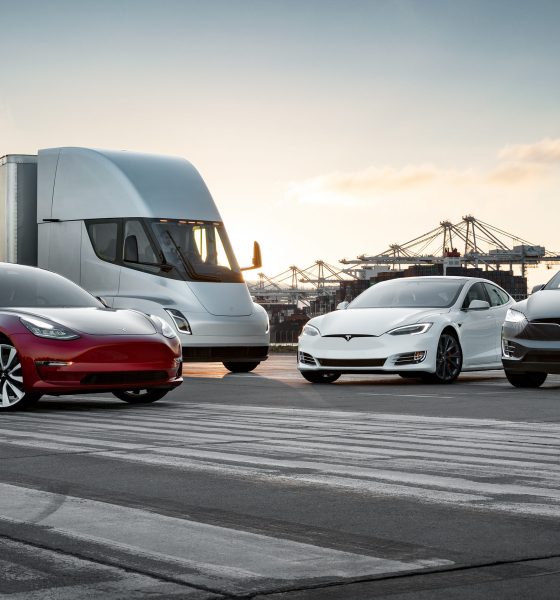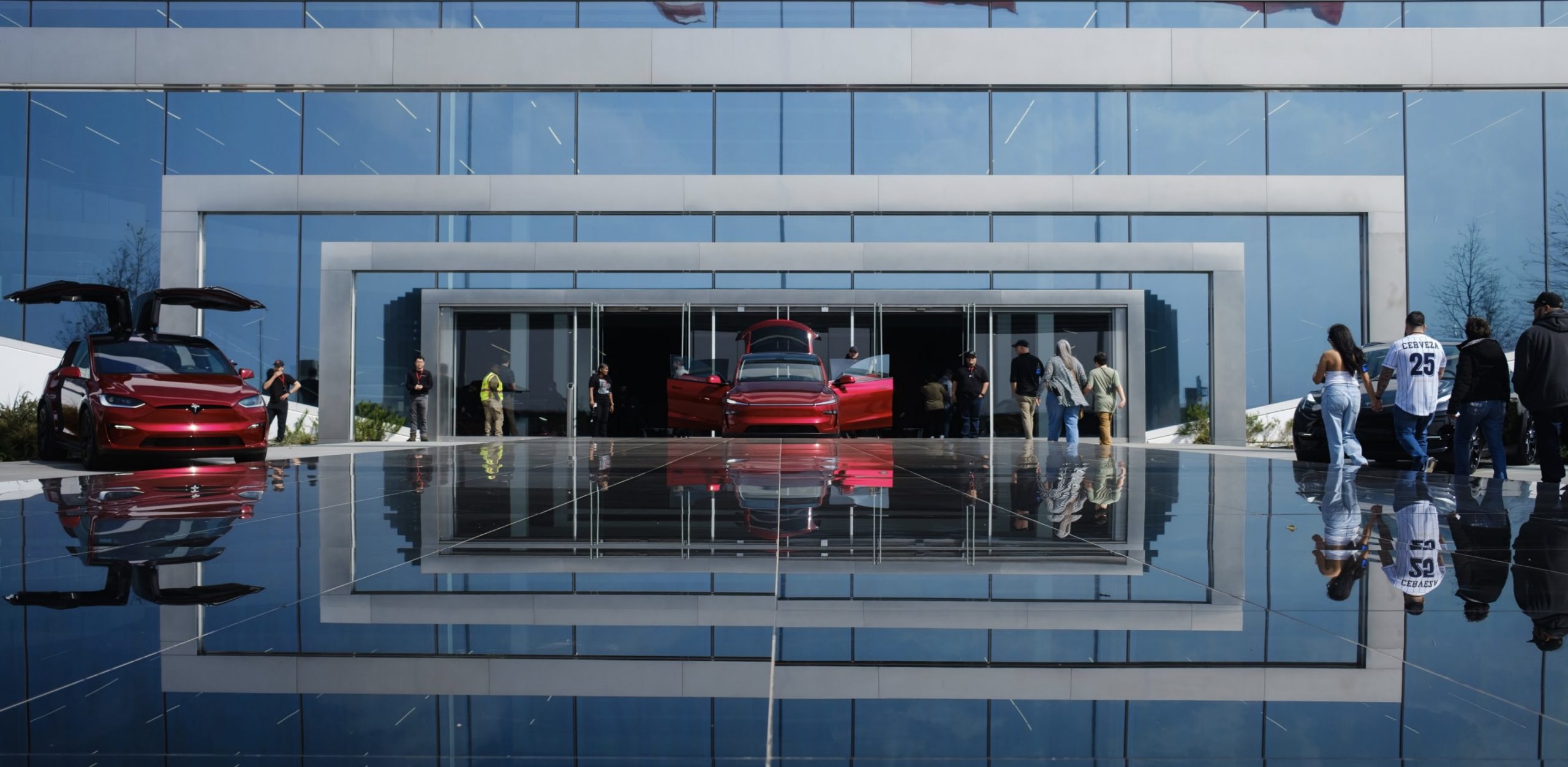

Investor's Corner
Tesla posts another profitable quarter in Q4, Model 3 in focus for global rollout
Tesla’s (NASDAQ:TSLA) fourth-quarter and full year 2018 earnings saw the Silicon Valley-based electric car maker beat Wall Street revenue estimates after posting $7.2 billion in revenue but fall below earnings estimates with a GAAP profit of $139 million due to a $54 million charge attributable to non-controlling interests.
Profitability
Tesla posted a smaller profit this quarter, as lower-priced variants of Model 3 hit the market, yet the company managed to meet the bold and ambitious target set by Elon Musk after Q3 2018’s surprise profit. It should be noted that Tesla’s second consecutive profitable quarter did not come easy for the carmaker, with the company having to trim its workforce by 7% amidst its continued efforts to bring the $35,000 base Model 3 to market. That said, the company’s fourth-quarter results did echo Musk’s estimates posted in an email to Tesla employees earlier this month, when he noted that Q4 would likely see a profit, though not as notable as the third quarter.
“As we improve the production rate of Model 3, the cost per vehicle continues to decline. It is critical that we continue this trend so that we can keep increasing the affordability of Model 3 while retaining a sustainable level of profitability.” Tesla wrote in its update letter.
Tesla also notes that the recent restructuring actions will reduce the company’s costs by about $400 million annually.
In the fourth quarter, the company saw its free cash flow rise to $910 million, from the $739 million last quarter.
Revenue
The company’s revenue for the fourth quarter consisted of $6.3B in automotive revenue and $371M from its energy and battery storage business. Automotive revenue saw a slight increase of 3% compared to the previous quarter. The energy and battery storage division, on the other hand, declined by 7% compared with last quarter.
Model 3
Elon Musk was not joking when he described the Model 3 as a “bet-the-company” vehicle. Just like in the third quarter, it was the Model 3’s sales that ultimately allowed Tesla to record its second consecutive profitable quarter in Q4 — a feat deemed impossible by the company’s critics. Continuing from the momentum it gained in the third quarter, Tesla’s Model 3 broke new records in the fourth quarter, delivering 63,359 units of the electric sedan to customers. Throughout 2018, Tesla delivered a total of 145,846 Model 3, making the vehicle the best-selling luxury car in the United States for the year.
“In Q4, we delivered 63,359 Model 3 vehicles to customers in North America. In January 2019, we started to produce Model 3 vehicles for Europe and China, and the car is now fully certified for sale in these markets. The market opportunity for Model 3 in Europe and China exceeds North America based on the most recent sales of mid-sized premium sedans. Model 3 was designed from the outset for a global market, and shares more than 98% of its parts in common across its regional variants. ”
In the fourth quarter, Model 3 maintained a stable gross margin at over 20%.
Tesla expects to increase Model 3 production volumes at its Fremont factory throughout 2019 until reaching a sustained rate of 7,000 units per week by the end of the year.
“We are planning to continue to produce Model 3 vehicles at maximum production rates throughout 2019. Inclusive of Gigafactory Shanghai, where we are initially aiming for 3,000 Model 3 vehicles per week, our goal is to be able to produce 10,000 vehicles per week on a sustained basis.”
Tesla’s Q4 and Full Year 2018 Update Letter can be accessed here.
More from Elon Musk in the Q&A call
- Tesla to begin Model Y tooling this year
- Tesla veteran CFO Deepak Ahuja is leaving
- More on Tesla’s upcoming pickup truck

Investor's Corner
Tesla Q4 delivery numbers are better than they initially look: analyst
The Deepwater Asset Management Managing Partner shared his thoughts in a post on his website.

Longtime Tesla analyst and Deepwater Asset Management Managing Partner Gene Munster has shared his insights on Tesla’s Q4 2025 deliveries. As per the analyst, Tesla’s numbers are actually better than they first appear.
Munster shared his thoughts in a post on his website.
Normalized December Deliveries
Munster noted that Tesla delivered 418k vehicles in the fourth quarter of 2025, slightly below Street expectations of 420k but above the whisper number of 415k. Tesla’s reported 16% year-over-year decline, compared to +7% in September, is largely distorted by the timing of the tax credit expiration, which pulled forward demand.
“Taking a step back, we believe September deliveries pulled forward approximately 55k units that would have otherwise occurred in December or March. For simplicity, we assume the entire pull-forward impacted the December quarter. Under this assumption, September growth would have been down ~5% absent the 55k pull-forward, a Deepwater estimate tied to the credit’s expiration.
“For December deliveries to have declined ~5% year over year would imply total deliveries of roughly 470k. Subtracting the 55k units pulled into September results in an implied December delivery figure of approximately 415k. The reported 418k suggests that, when normalizing for the tax credit timing, quarter-over-quarter growth has been consistently down ~5%. Importantly, this ~5% decline represents an improvement from the ~13% declines seen in both the March and June 2025 quarters.“
Tesla’s United States market share
Munster also estimated that Q4 as a whole might very well show a notable improvement in Tesla’s market share in the United States.
“Over the past couple of years, based on data from Cox Automotive, Tesla has been losing U.S. EV market share, declining to just under 50%. Based on data for October and November, Cox estimates that total U.S. EV sales were down approximately 35%, compared to Tesla’s just reported down 16% for the full quarter. For the first two months of the quarter, Cox reported Tesla market share of roughly a 65% share, up from under 50% in the September quarter.
“While this data excludes December, the quarter as a whole is likely to show a material improvement in Tesla’s U.S. EV market share.“
Elon Musk
Tesla analyst breaks down delivery report: ‘A step in the right direction’
“This will be viewed as better than feared deliveries and a step in the right direction for the Tesla story heading into 2026,” Ives wrote.

Tesla analyst Dan Ives of Wedbush released a new note on Friday morning just after the company released production and delivery figures for Q4 and the full year of 2025, stating that the numbers, while slightly underwhelming, are “better than feared” and as “a step in the right direction.”
Tesla reported production of 434,358 and deliveries of 418,227 for the fourth quarter, while 1,654,667 vehicles were produced and 1,636,129 cars were delivered for the full year.
Tesla releases Q4 and FY 2025 vehicle delivery and production report
Interestingly, the company posted its own consensus figures that were compiled from various firms on its website a few days ago, where expectations were set at 1,640,752 cars for the year. Tesla fell about 4,000 units short of that. One of the areas where Tesla excelled was energy deployments, which totaled 46.7 GWh for the year.
🚨 Wedbush’s Dan Ives has released a new note on Tesla $TSLA:
“Tesla announced its FY4Q25 delivery numbers this morning coming in at 418.2k vehicles slightly below the company’s consensus delivery estimate of 422.9k but much better than the whisper numbers of ~410k as the…
— TESLARATI (@Teslarati) January 2, 2026
In terms of vehicle deliveries, Ives writes that Tesla certainly has some things to work through if it wants to return to growth in that aspect, especially with the loss of the $7,500 tax credit in the U.S. and “continuous headwinds” for the company in Europe.
However, Ives also believes that, given the delivery numbers, which were on par with expectations, Tesla is positioned well for a strong 2026, especially with its AI focus, Robotaxi and Cybercab development, and energy:
“This will be viewed as better than feared deliveries and a step in the right direction for the Tesla story heading into 2026. We look forward to hearing more at the company’s 4Q25 call on January 28th. AI Valuation – The Focus Throughout 2026. We believe Tesla could reach a $2 trillion market cap over the coming year and, in a bull case scenario, $3 trillion by the end of 2026…as full-scale volume production begins with the autonomous and robotics roadmap…The company has started to test the all-important Cybercab in Austin over the past few weeks, which is an incremental step towards launching in 2026 with important volume production of Cybercabs starting in April/May, which remains the golden goose in unlocking TSLA’s AI valuation.”
It’s no secret that for the past several years, Tesla’s vehicle delivery numbers have been the main focus of investors and analysts have looked at them as an indicator of company health to a certain extent. The problem with that narrative in 2025 and 2026 is that Tesla is now focusing more on the deployment of Full Self-Driving, its Optimus project, AI development, and Cybercab.
While vehicle deliveries still hold importance, it is more crucial to note that Tesla’s overall environment as a business relies on much more than just how many cars are purchased. That metric, to a certain extent, is fading in importance in the grand scheme of things, but it will never totally disappear.
Ives and Wedbush maintained their $600 price target and an ‘Outperform’ rating on the stock.
Investor's Corner
Tesla releases Q4 and FY 2025 vehicle delivery and production report
Deliveries stood at 406,585 Model 3/Y and 11,642 other models, for a total of 418,227 vehicles.

Tesla (NASDAQ:TSLA) has reported its Q4 2025 production and deliveries, with 418,227 vehicles delivered and 434,358 produced worldwide. Energy storage deployments hit a quarterly record at 14.2 GWh.
Tesla’s Q4 and FY 2025 results were posted on Friday, January 2, 2026.
Q4 2025 production and deliveries
In Q4 2025, Tesla produced 422,652 Model 3/Y units and 11,706 other models, which are comprised of the Model S, Model X, and the Cybertruck, for a total of 434,358 vehicles. Deliveries stood at 406,585 Model 3/Y and 11,642 other models, for a total of 418,227 vehicles.
Energy deployments reached 14.2 GWh, a new record. Similar to other reports, Tesla posted a company thanked customers, employees, suppliers, shareholders, and supporters for its fourth quarter results.
In comparison, analysts included in Tesla’s company-compiled consensus estimate that Tesla would deliver 422,850 vehicles and deploy 13.4 GWh of battery storage systems in Q4 2025.
Tesla’s Full Year 2025 results
For the full year, Tesla produced a total of 1,654,667 vehicles, comprised of 1,600,767 Model Y/3 and 53,900 other models. Tesla also delivered 1,636,129 vehicles in FY 2025, comprised of 1,585,279 Model Y/3 and 50,850 other models. Energy deployments totaled 46.7 GWh over the year.
In comparison, analysts included in Tesla’s company-compiled consensus expected the company to deliver a total of 1,640,752 vehicles for full year 2025. Analysts also expected Tesla’s energy division to deploy a total of 45.9 GWh during the year.
Tesla will post its financial results for the fourth quarter of 2025 after market close on Wednesday, January 28, 2026. The company’s Q4 and FY 2025 earnings call is expected to be held on the same day at 4:30 p.m. Central Time.








